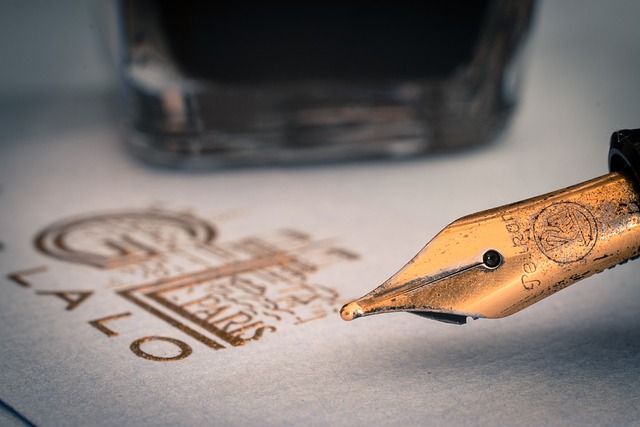The glabella area is prone to frown lines and wrinkles, impacting self-confidence. Both Botox and dermal fillers are top choices for treatment: Botox relaxes overactive muscles to prevent wrinkle formation (3-6 months), while dermal fillers enhance volume loss for instant, longer-lasting results (6-18 months or more). The choice depends on personal preference: Botox offers subtler, natural results with shorter durations; dermal fillers provide immediate, sustained enhancements. Dermal fillers are attractive for deep wrinkles or hollows in the glabella region compared to repeated Botox injections. Understanding their distinct mechanisms is key when deciding between these treatments based on desired outcome duration and individual goals.
“Unwind the tension in your glabella area with a revolutionary treatment—Botox. This article explores an increasingly popular non-surgical option for alleviating forehead creases and wrinkles. We delve into the science behind Botox, its therapeutic effects, and how it compares to dermal fillers.
Discover the benefits of Botox for glabella relaxation, potential side effects, and expert insights on choosing the right treatment. Uncover why Botox vs. dermal fillers is a hot topic in aesthetic medicine, offering a glimpse into a smoother, more relaxed future.”
Understanding the Glabella Area and Its Concerns

The glabella area, located between the eyebrows, is a unique and delicate part of the face. It’s here where frown lines and wrinkles can become particularly prominent, causing individuals concern about their appearance and self-confidence. This area is distinct from the rest of the forehead due to its thinner skin and higher concentration of facial muscles responsible for expressions like frowning and squinting. Over time, repeated muscle contractions can lead to dynamic lines and permanent creases, making it a common target for aesthetic treatments.
When considering glabella treatments, Botox and dermal fillers are two popular choices. Botox, a neurotoxin, works by relaxing the overactive muscles, thus preventing the formation of wrinkles. It’s a non-invasive procedure with immediate results and offers a temporary yet maintainable effect. On the other hand, dermal fillers enhance volume loss in the glabella region, providing a more lifted appearance. Fillers are ideal for patients seeking instant results or those who prefer a longer-lasting solution compared to Botox.
Botox: A Neurotoxin with Therapeutic Uses

Botox, a neurotoxin derived from the bacteria Clostridium botulinum, has evolved from its initial reputation as a dangerous poison to becoming a valuable tool in medical aesthetics and beyond. Its ability to relax muscles and reduce the appearance of wrinkles has made it a popular choice among those seeking non-surgical interventions for facial rejuvenation. When administered by a trained professional, Botox can provide significant advantages over dermal fillers, offering more targeted results for specific areas like the glabella (frown lines between the eyebrows).
Unlike dermal fillers that add volume and plumpness to the skin, Botox works by blocking the nerve impulses responsible for muscle contraction, effectively smoothing out dynamic wrinkles. This makes it particularly effective for treating expression lines caused by frequent frowning or squinting. The comparison between Botox and dermal fillers often comes down to personal preference and desired outcomes. While dermal fillers can provide immediate results with longer-lasting effects, Botox offers a more subtle, natural-looking enhancement with shorter durations, making it ideal for those who prefer less dramatic changes.
Dermal Fillers: An Alternative Approach

When considering glabella area treatment, it’s essential to explore alternatives to Botox, like dermal fillers. While Botox is a popular choice for smoothing frown lines and wrinkles, dermal fillers offer a different approach by adding volume and plumping up depressed areas. In contrast to the neurotoxic effect of Botox, which relaxes muscles, dermal fillers work by injecting a substance into the skin to lift and enhance specific features.
Dermal fillers can be an excellent option for those seeking a more substantial and immediate result in the glabella region. They provide a temporary to semi-permanent solution, depending on the product used, offering a quick fix for deep facial wrinkles or hollows. This alternative approach allows individuals to achieve a youthful appearance without the need for repeated injections, making it an appealing choice for those considering Botox vs dermal fillers for the glabella area.
Comparing Botox and Fillers for Glabella Treatments

When considering treatments for the glabella area, understanding the differences between Botox and dermal fillers is essential. Both are popular options for smoothing out expression lines and improving skin appearance in this complex facial region. However, they work in distinct ways.
Botox, a neurotoxin, relaxes muscles by blocking nerve signals, thereby preventing muscle contraction that causes wrinkles. It’s a temporary solution, typically lasting 3-6 months, but offers precise results for specific lines and frowns. On the other hand, dermal fillers enhance volume loss in the glabella area by injecting hyaluronic acid or collagen-based products beneath the skin. Fillers provide immediate results and can last from 6 to 18 months or longer, making them a more permanent solution for some individuals. The choice between Botox vs dermal fillers ultimately depends on personal preferences, desired outcomes, and the individual’s lifestyle.
The Benefits of Botox for Glabella Relaxation

Botox has emerged as a popular choice for individuals seeking glabella relaxation, offering a non-invasive approach to achieving a smoother and more youthful appearance. Unlike dermal fillers, which are often used to add volume and enhance specific areas, Botox targets dynamic muscle movements, particularly in the glabella (the area between the eyebrows). By relaxing these muscles, it can effectively reduce the appearance of deep frown lines and wrinkles, providing a more serene and relaxed expression.
One of the key advantages of Botox for glabella relaxation is its ability to prevent the formation of persistent facial lines. By addressing the root cause of these lines—the continuous contraction of facial muscles—Botox allows individuals to maintain a more youthful and refreshed look without the need for frequent procedures. Moreover, it offers a natural-looking result, making it an attractive alternative to surgical options or more dramatic filler injections.
Potential Side Effects and Considerations

While Botox is a popular choice for glabella area treatments, it’s important to be aware of potential side effects and consider it against alternatives like dermal fillers. Common side effects may include temporary redness, swelling, or discomfort at the injection site, as well as headaches due to muscle relaxation in the treated area. These typically subside within a few days.
When comparing Botox to dermal fillers, both have distinct advantages. Dermal fillers offer immediate results and can enhance volume for a longer duration than Botox, which requires regular treatments for maintenance. However, Botox is less invasive and has a lower risk of adverse reactions compared to fillers. The choice between the two depends on individual preferences, desired outcome, and consultation with a qualified healthcare provider.
Choosing the Right Treatment: Expert Advice

When considering glabella area treatment, understanding the nuances between Botox and dermal fillers is crucial. Both have their unique advantages and applications. Botox, a neurotoxin, is particularly effective for smoothing frown lines and wrinkles by relaxing muscles. It’s often the go-to choice for targeted treatments around the eyes and forehead. On the other hand, dermal fillers enhance volume loss in the glabella area, providing immediate results in shaping and redefining facial contours.
Choosing between them depends on individual needs and goals. Botox is ideal for preventing future wrinkle formation while dermal fillers offer a quick fix for immediate volume restoration. Seeking expert advice from qualified dermatologists or plastic surgeons ensures you make an informed decision, aligning treatment with your specific expectations and skin type.
